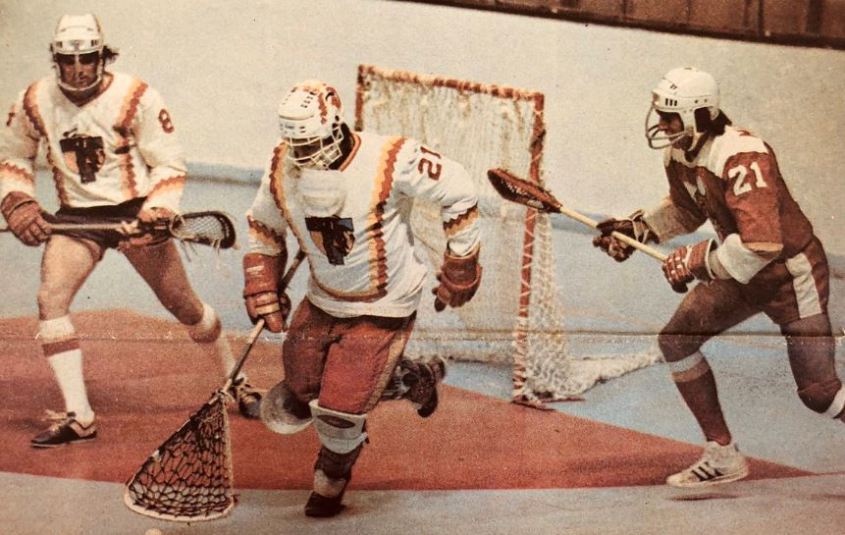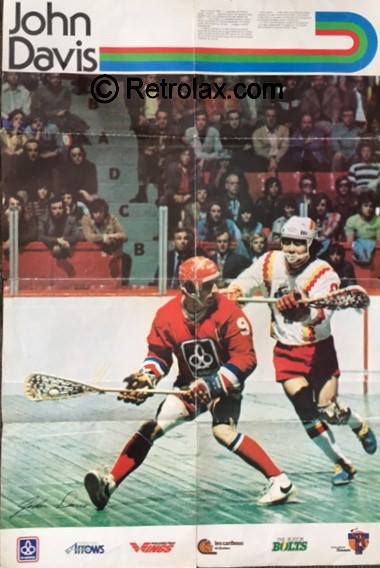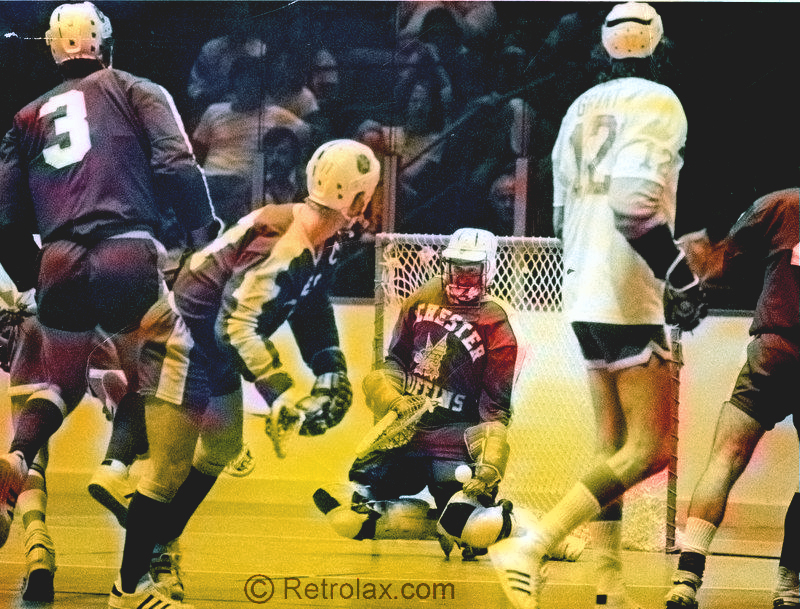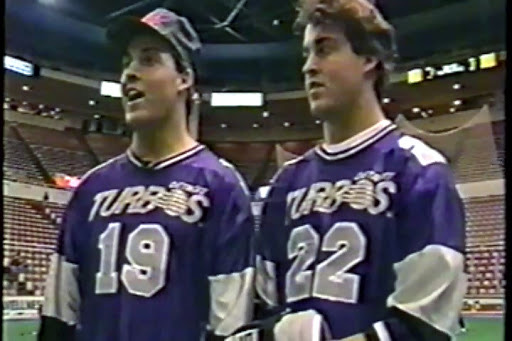
In hockey it was Jacques (Jake the Shake) Plante, then with the all-powerful Montreal Canadiens, who discarded the crease-bound image which had restricted goal tedders for decades.
Plante adopted such a nomadic demeanor that it was difficult to determine if Canadiens had six attackers or the traditional five skaters and a goaltender. It wasn’t long ‘ before others began to roam and a new dimensiön — not to mention a great measure of excitement — was added to the game of hockey. From there, goalies such as Eddie Giacomin of the New York Rangers have been able to expand the new role until the goalie has actually become an essential cog offensively.
Instead of the time-consuming “freeze,” goalies are playing the puck to teammates, a tactic which can, as Philadelphia Flyers’ stingy netminder Bernie Parent proved in last year’s Stanley Cup playoffs — result in three-on-two or two-on-one breaks.
In lacrosse, it is Bob ( Buffer) McCready who is credited with changing the sluggish defensive make-up which had hampered boxla netminders. The 35-year-old native of St. Catharines, Ontario, who now plays for Toronto Tomahawks; began traipsing out of the protective crease area while still a junior. His success at catching the opposition off guard and creating odd-man breaks has made him, according to Toronto general manager Jim Bishop, “the best offensive goaltender in lacrosse. “
However, McCready’s statistics this year don’t bear out Bishop’s assessment as the hard-running goalie has only 35 assists in 28 games as compared to Rochester Griffins’ Merv Marshall, who has 63 åssists in 30 games.
Wayne Platt of Philadelphia Wings has 36 assists in 27 games, while Ernest Mitchell of Montreal Les Quebecois has 25 assists, and Rick Palla of Syracuse Stingers 30 assists in 31 games.
Isn’t all that wandering time a bit dangerous? After all, the net is empty and all the goalie has to do is lose coritrol of the ball for an instant and the opposition is set up for an easy score.
“You’re safe 99 per cent of the time,” said McCready prior to a recent game. “The team is conditioned now to reacting quickly if we lose posession of the ball while the goaltender is on offence. If we are in the opposition end and lose control, our team-goes into a press to prevent the other team from fast breaking. Of course, it is my job to hustle back to the crease. Sometimes it is awfully close, but it isn’t all that often that we get burned. ” Goaltenders do score occasionally. McCready potted the winning goal a couple of years ago when his team was on its way to the Canadian senior lacrosse championship.
“l don’t like to shoot the ball. It is my function to create the odd-man situation, yet keep track of my defensive responsibilities. Once in a while I find myself in tight and • the only thing to do is shoot the ball,” McCready added.
McCready and Marshall have the smallest sticks employed by the dozen National Lacrosse League goaltenders. The standard stick has a webbing area of 16 to 18 inches, •while McCready’s is 14 and Marshall’s 15 inches. The smaller basket makes for better control, although •it sacrifices blocking potential.
“l suppose it costs me a goal a game to use the smaller stock, but most games I’m able to more than make up for that offensively,” said McCready. “Actually, the stick isn’t so much a problem as the wider net we’ve been ‘forced to’ use this season. That extra six inches’ has brought the goaltending averages way up. “
The NLL increased the width of the net from four feet to four-foot-six. McCready has a simple explanation for Marshall’s success. “They (Rochester) play a system in which the goalie headmans the ball to the farthest man up floor, setting up a one-man break. That is the type of system I was accustomed to until this year when I started playing •with Tomahawks. We hold the ball longer and wait for the entire five-man unit to attack and I suppose that is a big reason why I’ve only got half the assists Marshall has.” Is the nomadic netminder in lacrosse here to stay? “It’s betting to the point in this league that a goaltender has to be a two-Way threat or he weakens the team. That’s important for younger goalies to remember while they’re *till in junior and have a chance to develop,” said McCready. Of course, by the time those juniors are ready to try out for NLL teams, they’ll still. have floor-wise ball-stoppers .the calibre of McCready and Marshall to beat out.






